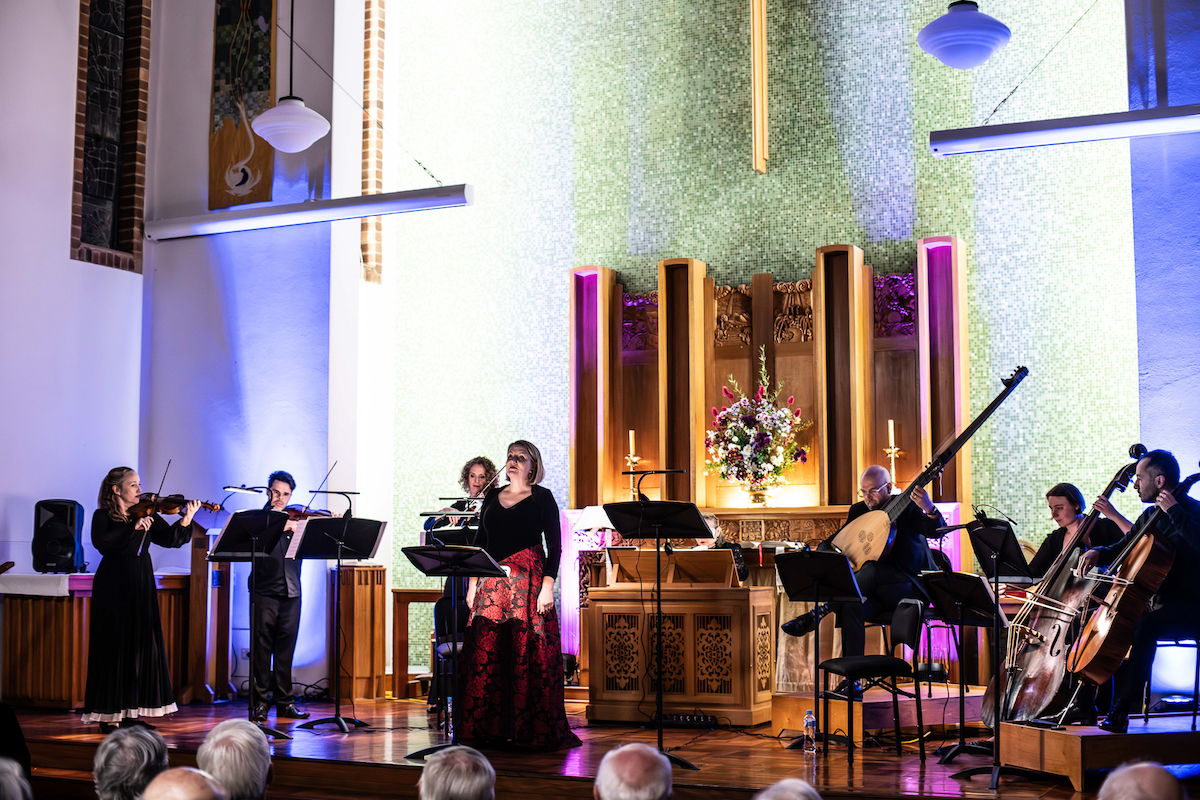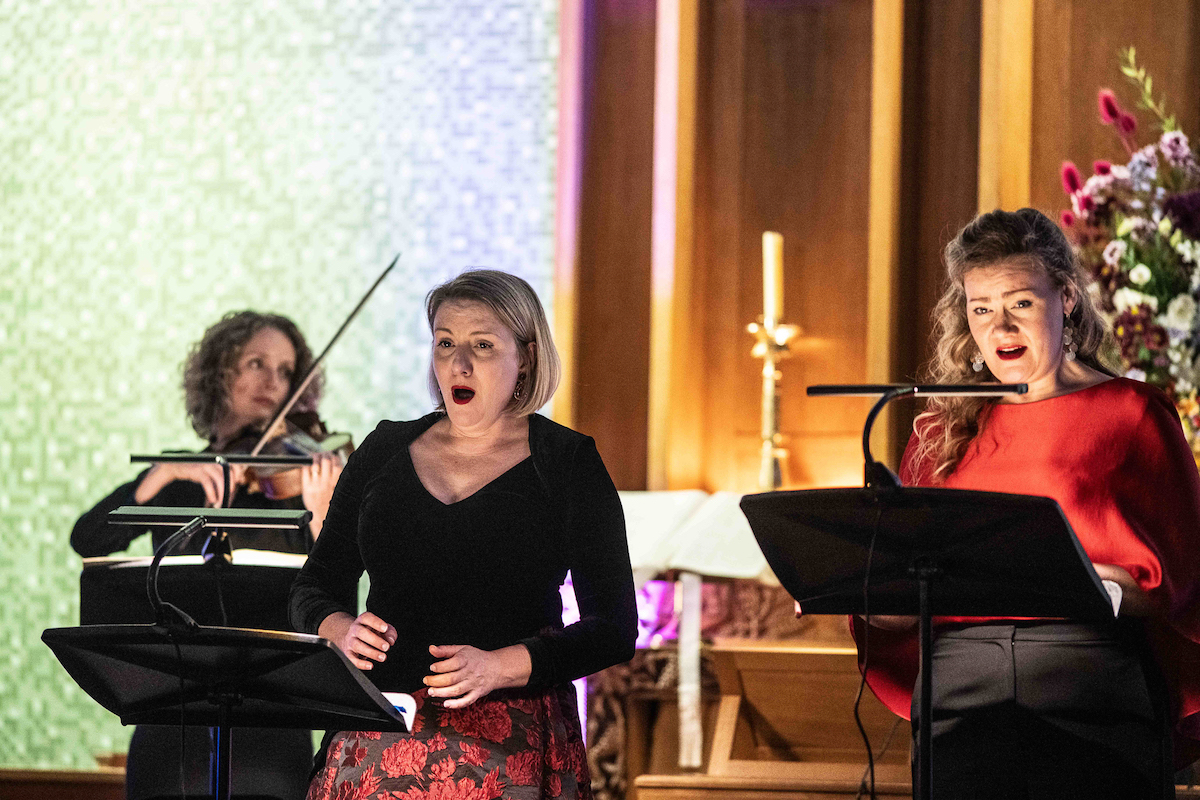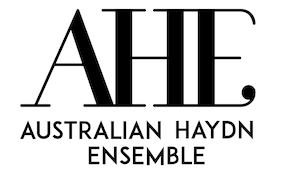The Australian Haydn Ensemble partners with two noted exponents of early and contemporary singing techniques, Celeste Lazarenko (soprano) and Helen Sherman (mezzo soprano), in a program of sacred music from the 18th, aptly showcased in the Wesley Uniting Church, Canberra.

Australian Haydn Ensemble’s Heavenly Sopranos at the Wesley Church, Canberra. Photo © Oliver Miller
The evening opened with excerpts from Oratorio Sanctus Petrus et Sancta Maria Magdalena, by Johann Adolf Hasse. Amid a walking pace pulse, with AHE Artistic Director Skye McIntosh leading five string players, organ, and theorbo, they drove the music before Sherman stepped up to sing a long-held note. Lazarenko joined in to create a delicious dialogue between the two.
From the highly ornamented, to the plaintive, this music has baroque fingerprints firmly imprinted on the score. Even after 250 years since inception, its sprightly and rhythmic nature is enough to get the pulse racing.
Neapolitan composer Francesco Durante’s selections from Concerto No. 1 in F minor followed. This doleful and sweet music spot lit the unity of AHE – always such a pleasing aspect of their performances – and the precise balance between instrumentalists.
Another work by Hasse came before the interval, his Motet Alta Nubes Illustrata. A leading composer for voice for his time, Hasse’s Motet for solo soprano is a radiant little work. It’s also a trial for a singer, but one filled with bright sunshine. Lazarenko’s voice carried the three arias with strength, sublime articulation, and long flowing melismas. Such a delight.

Heavenly Sopranos Celeste Lazarenko and Helen Sherman. Photo © Oliver Miller
The Stabat Mater, by Giovanni Battista Pergolesi, is a transcendent jewel. Composed near the end of his life as he was dying from tuberculosis, it captures what it means to suffer while death is at hand.
In 12 movements, the subtleties of his Stabat Mata ache with sorrow and beauty and the two singers captured its essence and refinement, its grief and its elegance. As much as a reflection on the composer’s mortality as on the death of Christ, it’s as if a whole life can be heard in these musical tears of a mother.
There’s are outpourings of grief and joy in some movements, mystery and sadness fill others. Lighter moments are included too, even bouncy tunes. A perfect symmetry exists in the placing of tempos and styles, a balance that makes for a completely rounded composition. This is evident in the sections for the singers, regardless of whether they are together or not.
As it draws closer to the last movement, like a final breath, it relaxes and gives up all its words and sounds before a final burst as to say, here I am.
AHE never fail to enchant, surprise and offer music that transcends time and place.
Australian Haydn Ensemble performs Heavenly Sopranos at Berry Uniting Church Hall, 12 April; Bowral Memorial Hall, 13 April; The Art House, Wyong, 14 April, and City Recital Hall, Sydney on 16 April (also available on Australian Digital Concert Hall).












Comments
Log in to join the conversation.